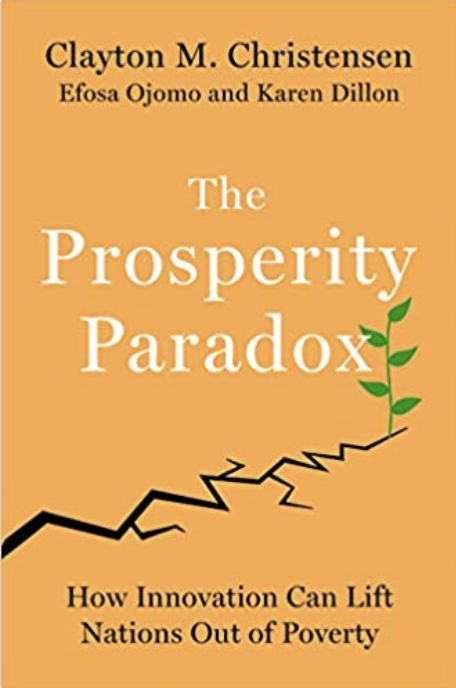Although it is true we have certainly made some progress, it seems today there are as many answers to the question of how to eradicate poverty as there are people trying to eradicate it.
These answers range from fixing dismal societal infrastructure (including education, healthcare, transportation, and so on) to improving institutions, to increasing foreign aid, to boosting foreign trade, and many others. And while there is disagreement on what the right strategy is, most would agree that progress has been slow.
Efosa Ojomo, co-author of The Prosperity Paradox, knows first-hand the pain of failing despite well-intended efforts. His experience offers insight into the frustration surrounding so many once-hopeful projects designed to bring better living and working conditions to impoverished economies.
Efosa is originally from Nigeria, but he has spent the bulk of his adult life living and working in the United States. While he recognized the poverty that plagued poor countries, it was somewhat of a distant concern for him, until he found himself reading the dedication in the book The White Man’s Burden, New York University Professor William Easterly’s attack on Western efforts to aid impoverished countries. In this book, Easterly told the story of Amaretch, a 10-year-old Ethiopian girl who rose at 3 a.m. each morning to fetch firewood to provide for her family. She had to walk miles to sell the firewood in the market.
Efosa couldn’t sleep the night after he read her story. No child deserved to live such a difficult life. So Efosa, together with some of his friends, set up a nonprofit organization, Poverty Stops Here, to raise money to build wells in various parts of his native Nigeria.
Efosa and some close friends managed to raise more than $300,000 and identified five communities in which to help build wells. But as it turned out, wells break down. About six months after building a new well, Efosa would get a call in his Wisconsin home that the water wasn’t coming out anymore and he would have to figure out from thousands of miles away how to get someone in Nigeria to go and fix it.
Since all the wells his organization built were in rural areas, as are many wells built by various development organizations, finding a skilled technician to source parts and go to the village was always very challenging.
Today, only one of the five wells that Poverty Stops Here installed is functional. Efosa and his friends, who had so earnestly set out to help five villages, reluctantly gave up on building additional ones. Poverty Stops Here, however, is not a unique story. There were more than 50,000 broken wells across Africa alone, according to a study by the International Institute for Environment and Development. In some communities, as many as 80 percent of their wells were broken.
The experience was profoundly disheartening for Efosa who was so eager to help alleviate suffering in the world. But if these vexing problems can’t be solved by an injection of resources, then what would help instead? Why do some countries fare better than others? Why do some efforts succeed, and not others? Underlying it all is one critical question: how can we generate sustainable prosperity?
The reality is that true prosperity – the process by which more and more people in a region improve their economic, social and political well-being – is still out of reach for too many. And, when we dig deeper we find that, the majority of those who have escaped poverty are from China, a country that has received little development aid relative to other nations. The number of people living in extreme poverty has actually increased in some regions that receive significant funding for poverty reduction programs, such as sub-Saharan Africa. Why are our efforts not yielding the results for which many hope?
Our research suggests prosperity is not generated through the flood of well-intentioned resources from wealthy countries to low- and middle-income countries. Instead, prosperity takes root when organizations invest in a particular type of innovation we call market-creating innovation. This type of innovation serves as a catalyst and foundation for lasting economic development, and results in new jobs and new sources of tax revenues that can fund the development of institutions and infrastructures necessary to further develop societies.
Market-creating innovations do exactly what the name implies – they create new markets. But not just any new markets, new markets that serve people for whom either, no products existed or existing products were neither affordable nor accessible for a variety of reasons.
When innovators create a new market, they must hire many more people not only to make the product or service, but also to get it to the new customers. This activity creates a virtuous cycle in economies that further fosters the development of more new markets.

Published with permission from The Prosperity Paradox: How Innovation Can Lift Nations Out of Poverty by Clayton M. Christensen, Efosa Ojomo, and Karen Dillon.
Follow us here and subscribe here for all the latest news on how you can keep Thriving.
Stay up to date or catch-up on all our podcasts with Arianna Huffington here.




